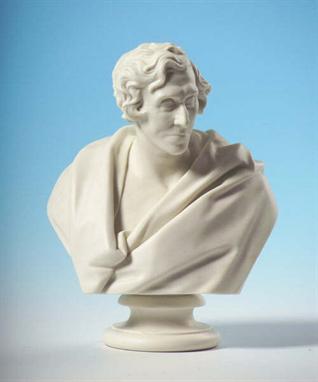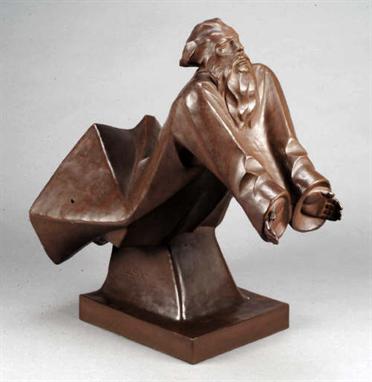We found 7199 price guide item(s) matching your search
There are 7199 lots that match your search criteria. Subscribe now to get instant access to the full price guide service.
Click here to subscribe- List
- Grid
AGNES GROZIER HERBERTSON: LUCY-MARY OR THE COBWEB CLOAK, ill Margaret W Tarrant, 1910, 1st edn, 6 col’d plts, orig pict cl gt + GRACE RHYS: THE MAGIC WOOD BEYOND THE WORLD, ill Margaret W Tarrant, 1931, 1st edn under this ttl, orig pict cl + HANS CHRISTIAN ANDERSEN: FAIRY STORIES, ill Margaret W Tarrant, nd 10th edn, orig cl d/w (3)
A group of four Staffordshire flat backs figure groups comprising: a highland male and female figure group seated with painted clock face bellow, 35cm high; a highland male and female figure group seated beneath a wooded garland, 36cm high; a gentleman on horse back with orange cloak, 35cm high and a standing male and female group, 32 cm high (4)
The Virgin and Christ child, Savoy, 16th century terracotta relief, the three quarter length relief with the crowned Virgin tenderly holding the standing Christ child, the Virgin's tresses falling to her shoulders, her cloak and shift with intricate borders h.48cm. Sold with a thermoluminescence analysis report from Oxford Authentication stating that the sample (N202c12) was last fired between 300 and 500 years ago, i.e. between 1500 and 1700. This finely worked terracotta relief is difficult to place as it appears to be a combination of Northern and Italian styles; note the benevolent expression of the Virgin and the intricate tooling to her drapery which would indicate a Northern origin, and the stance of the Child and the Virgin which is Italian in origin. Compare with the full length figure of the Virgin and Child in the Louvre, attributed to Savoy. RELATED LITERATURE Sculptures Francais, catalogue, Musee du Louvre, Paris, 1996, p.196
BRITISH COMMEMORATIVE MEDALS, Great Britain, Henry VIII, Bronze Portrait Medal, c.1524, uniface cast, possibly Continental workmanship, bearded bust left, wearing large hat and ornate cloak, HENRICVS VIII GD REX ANGL FRANC DOMI, 59mm (cf MI 30/14). Very fine with dark patination, extremely rare. The medal is an old re-working or restitution of a unique lead medal, formerly in the Bute Collection (lot 13) and illustrated in the MI Plates from an electrotype copy. The DG in the legend has been reversed and DOM H has become DOMI. A smaller version is also known, this having a Tudor Rose on the reverse (MI 30/15). The similarity in the workmanship of this medal when compared with others of the Count d’Egmont and Charles V would seem to suggest a medallist from the Netherlands rather than Hans Daucher, to whom Henry Grunthal attributed the later (Portcullis reverse) portrait medal of 1526 (ANS, Museum Notes, 1958). Another example was offered by Bonhams, 19 October, 1993 (lot 151 - 520)
A pair of Meissen allegorical figures of 'Autumn' and 'Winter' circa 1755 modelled by F.E. Meyer, 'Autumn' as a Bacchanalian youth holding a goblet and grapes, clad in a robe decorated with indianische Blumen, with a hare hung fron the strap, and leaning on a gilt-edged rococo urn encrusted with fruiting vines, 'Winter' as a bearded man with a fur-lined purple cloak painted with purple and blue flower sprigs, a goblet and bottle by a small fire on a pedestal to his side, from which grows a branch at the rear, a brazier at his feet, the high scroll-moulded bases edged in gilding crossed swords marks in underglaze-blue 22.5cm., 8.875in. some minor chips (2) Another example of 'Winter' is published by R. Ruckert, Meissener Porzellan, no.991, where it is attributed to Friedrich Elias Meyer.
ERIC GILL ST MARTIN OF TOURS RELIEF patinated bronze relief panel, cast inscription 'St Martin/ Pray/ For Us' 45cm x 39cm Literature: Judith Collins, 'Eric Gill: the Sculpture', London 1998, pl. 249, pp 195-6 Note; This relief panel was originally commissioned in stone for Campion Hall Brewer Street Oxford in 1935, and executed from September - October of that year. The new building was designed by Edwin Lutyens and the plaque was unveiled on Armistice Day, 11th November 1935. A cast of the finished work was presumably taken at this time. In this relief St Martin has dismounted from his horse and is depicted in the act of tearing his cloak in half in order to share it with the naked beggar who seeks his help.
A Bust of Richard Green, after Edwd W Wyon, Minton, published London 1863, looking downwards to sinister, wearing a heavy "Roman" cloak, circular base, impressed "Minton", year cypher for 1864, titled "RICHARD GREEN ESQ EDWD W WYON SCULPTOR LONDON 1863", 27cm high This bust was not given a shape number and does not appear in the Minton figure books, however, examples were produced in limited quantities. See Jones (Joan) MINTON-The First Two Hundred Years of Design and Production, pg.332.
Ernst Barlach (1897-1938) for Meissen, a Bottger stoneware figure 'Schwebender Gottvater' (Floating Godfather), designed 1924, issued 1954, signed to one side, impressed crossed swords mark and 'Bottger Steinzeug', incised A1070 and L230 and with a stamped mark, 51cm high (two chips to rear of cloak)
Roland, a cold painted bronze and ivory figure, Mephistopheles, his head cocked and a hand on his chin, wearing a hooded cloak with tights and pointed shoes, all painted red, his face and hands in ivory, the rusticated triform marble plinth inscribed 'Roland Paris', 24cm high overall (minor wear to paint)
Kerman part silk pictorial rug, south central Persia, late 19th-early 20th century, 3ft.10in. x 2ft.9in. 1.17m. x 0.84m. Overall uneven wear, heavy in places, damage, patched lower centre field. The rug shows scenes from the life of the Persian hero Rustam, taken from the Shahnameh of Firdausi. Rustam himself is seated on his horse Rakhsh; his attributes as described by Firdausi are present here - his helmet made from the skull of the White Demon, his bull-headed mace, his spotted leopard-skin cloak and his split beard; in the background, his friend Afrashiob kills Ali Khoosh. Note details in yellow silk in the elephants anklets.
An Elizabeth II Assembled Full Dress Uniform and Equipment of the Household Cavalry (Blues and Royals), comprising:- a white metal helmet with red horse hair plume; a blue tunic with scarlet facings and staybrite buttons; plated cuirasses with leather linings and shoulder scales; a buff leather shoulder belt with brass buckle; a black plastic pouch with brass badge; a pair of white buckskin breeches; a pair of black leather jack boots; a blue cloak; a webbing sword belt; a tan leather sword frog and pouch; a sword with plated hilt and scabbard; an iron framed leather saddle with stirrup irons and leathers; a black sheepskin; a bridle with brass headpiece and plated bit; another bit and two curb chains; a breast strap etc..
A Gebruder Kuhnlenz Bisque Socket Head Girl Doll, with blonde mohair wig, brown glass closing eyes, hair lashes, open mouth with four upper teeth, neck stamped 26 Gbr.165K 2 Germany 2, wood and composition ball jointed body, wearing a cream wool cloak, pink striped cotton dress and undergarments, 46cm high
MINIATURE ON IVORY. Double sided locket with a portrait of a woman with wispy blonde hair wearing a light blue hooded cloak. Initialed H.F.F. and lined with silver foil. The other side has a carved tortoise shell frame surrounding a central ivory medallion that has a woman reading before a classical plinth, all in white and blue. Gold filled frame has minor wear, the tortoise shell has cracks. 2 7/8h.
A Hispano-Philippine carved and polychromed wood figure of St Joseph, in a blue tunic with a brown cloak over the left shoulder, on block base incised with a cruciform device, 109cm h; a carved and polychrome wood figure of the Virgin Mary in crimson and yellow, 76cm h, both probably 19th c (2) ++ Minor losses, flaking and chips to the layer of gesso; shrinkage cracks. Figure of the Virgin Mary lacking the right hand and with extensive flaking including losses to the layer of gesso and old insect infestation
A Dutch Delftware polychrome charger, painted in predominantly manganese, green and cadmium yellow with St Martin dividing his cloak with the begger, between flowers, in a continuous manganese leaf border with yellow flowers at intervals, 42.5cm diam, painter's mark A H conjoined in blue, mid 18th c (see illustration and detail) ++ In unusually fine condition with a few very small rim flakes, the odd minor light glaze scratch, no cracks, chips or restoration













































